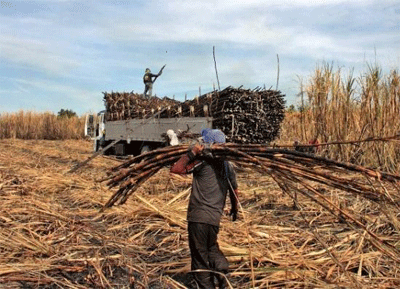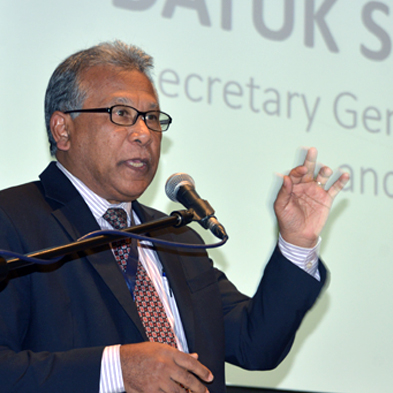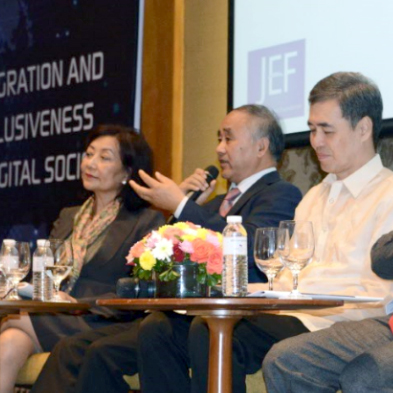Having trouble reading this email? View it in your browser. |
|||
 |
|||
|
|||
Based on records of the Department of Agrarian Reform (DAR), about 4.8 million hectares have been awarded to 2.8 million agrarian reform beneficiaries (ARBs) since CARP’s implementation. The program had a total expenditure of PHP 286 billion or an annual average of PHP 9.87 billion from 1987 to 2016—a hefty sum over a long period of implementation, prompting many to ask about CARP’s impact on its beneficiaries. In a 2017 study of PIDS, authors Marife Ballesteros, Jenica Ancheta, and Tatum Ramos wrote that the accomplishments of CARP in terms of area covered and number of beneficiaries have been significant. Reformed area covered 70 percent of estimated nonowner-cultivated agriculture lands, benefiting about 54 percent of agricultural households in the country. CARP has also supported the distribution of about 2.5 million hectares of alienable and disposable lands and the issuance of stewardship rights for forest lands and leasehold rights for agricultural lands not covered by land reform. Also reported in other studies were the positive effects of CARP on the beneficiaries’ welfare. For example, a 2015 survey of ARBs led by Erniel Barrios found that being an ARB has positive effects on total household income due to better access to various government interventions. Beneficiaries have also largely profited from the rapid increase in rice yield made possible by the Green Revolution technology. A 2009 World Bank study also found that 52 percent of CARP beneficiaries who were poor in 1990 became nonpoor in 2000. However, Ballesteros and her co-authors cautioned that these outcomes were generally observed in areas where the lands covered have higher productivity. They added that it was also unclear as to what components of CARP have improved the welfare of beneficiaries since the effects were similar between families who obtained their land through the program and those who acquired their properties through purchase or inheritance. Also, there was no clear evidence of CARP’s success in terms of increasing investments in agriculture and enhancing access of farmers to formal credit. Moreover, they reported that common issues like poor targeting and lack of efficient land record system continue to delay the program’s completion. Targeting has been hampered by the absence of parcel-based information on land use and ownership, making the process vulnerable to the influence of landowners and local officials, including those from DAR. This has resulted to ownership conflicts between landowners and ARBs as well as the cancellation of titles due to coverage of exempt or excluded properties and issuance of titles to unlawful beneficiaries. The authors noted, however, that while the implementation of the program may have been flawed, revising the law is unnecessary as there are only a few large sizes of agriculture lands left for distribution. For now, what can be done, they recommended, is to facilitate the resolution of long-standing issues (e.g., ownership conflicts, cancellation of titles, default on land payments by ARBs) and the completion of transfer of awarded lands to rightful owners. Government also needs to focus on programs to modernize agriculture, with adequate provision of support services to small farmers to access new technologies, credit, infrastructure, value chains, and markets. Together with the Department of Agriculture, DAR can support policies and programs toward consolidating farm operations for economies of scale and developing social enterprises. The department should also adopt a progressive land taxation scheme to deal with issues on landownership concentration. The said scheme can be supported by ongoing process improvements (e.g., digitization of records) in agencies that handle land administration, such as the Land Registration Authority and the Department of Environment and Natural Resources. You may access PIDS studies on agrarian reform from the Socioeconomic Research Portal for the Philippines. Simply type ‘agrarian reform’, ‘CARP’, ‘poverty, agriculture, land management,’ ‘property rights’, and other relevant keywords in the Search box.
|
January 8, 2018, 2-4PM ---------------------------------------
'People-centered' initiatives key to achieving wider regional integration in ASEAN
As the Association of Southeast Asian Nations (ASEAN) moves toward deeper integration, member-states must focus not only on economic interests but also on the wider needs of ASEAN people. This will make them secure as region-wide measures are being initiated. According to Datuk Seri J. Jayasiri, secretary-general of Malaysia’s Ministry of International Trade and Industry, a people-centered ASEAN will contribute to regional integration as the needs of the larger segment of the population are met and they see the benefits of region-wide initiatives. READ MORE - - - - - - - - - - ASEAN member-states should address challenges in technology, innovation—experts
Technology and innovation make lives easier but they pose challenges especially for developing countries. During the 2017 Asia-Pacific Forum with the theme “Integration and Inclusiveness in a Digital Society”, experts talked about the various challenges that ASEAN member-states face as they try to keep up with the fast-paced digital era. READ MORE |
||
RESEARCH PAPER SERIES
ECONOMIC ISSUE OF THE DAY
POLICY NOTES
|
|||
Need help? Have feedback? Feel free to contact us. © 2018 Philippine Institute for Development Studies.
|
|||
 Land acquisition and distribution to poor and landless farmers have been going on in the Philippines for 30 years under the Comprehensive Agrarian Reform Program (CARP).
Land acquisition and distribution to poor and landless farmers have been going on in the Philippines for 30 years under the Comprehensive Agrarian Reform Program (CARP). 


